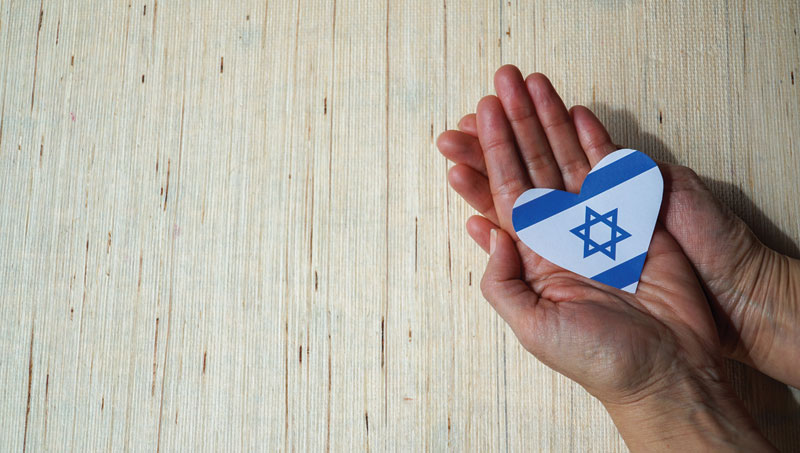Until recently, Women of the Wall (WoW) was but a distant blip on my radar. All that was changed as I came across a BBC interview, in which a prominent WoW member painted Israel as a misogynist country oppressing women. I felt I could not remain silent.
Religious freedom and women’s rights are cherished values for us all. It is immoral to manipulate these feelings on an issue that has nothing to do with either. After almost a decade of quiet, Women of the Wall went on an offensive with a well-oiled campaign aimed at furthering the political agenda of its chairperson, Anat Hoffman. In doing so, the organization has stooped to blackening Israel before the international media and driving a wedge between Israel and Diaspora Jewry.
In the Israeli liberal democracy, Women of the Wall are free to pray as they want. Yet they are asked to respect an existing tradition of prayer at the Kotel. For 1,700 years, Jews have chosen to pray at various spots along the Western Wall staying as close as possible to the remains of the Holy Temple. The tradition of prayer here has always been what would be called Orthodox, since none other existed in Israel until recent decades. The contention that the Kotel had never been an Orthodox synagogue, because it never had a mechitza (divider) fails to note the Ottoman and later British ban on constructing a mechitza or bringing Jewish symbols to the Kotel. In fact, when the otherwise secular pre-state army, the Hagana, wanted to affirm Jewish sovereignty at the Kotel, it did so by putting up a mechitza.
Although WoW claims that its goal is just to pray, the organization’s true aim is to transform the Kotel. Hoffman shared her vision of the site as a secular “national monument,” devoid of religious attributes. Nobody could imagine something of the sort done at any place of worship in the world, be it the Vatican or the Westminster Abbey, yet somehow it seems normal at the site closest to the heart of millions of Jews.
Through its actions, WoW negates the feelings of hundreds of thousands of women, who come to pray there regularly. They revere the traditions of the Kotel and call it their spiritual home. It would behoove a women’s rights group with under 200 worshippers to give at least some consideration to the regular denizens of the Wall. Yet instead of engaging in a respectful discussion with these women, Women of the Wall presume to educate them, “model[ing] to all Jewish women … that women can take control over their own religious lives]” or downright villainizing them as a “ psychological lynch-mob” acting at the hands of “their rabbi-handlers.“
Still, it is the collateral damage created by WoW to the identity of Diaspora Jewry, to the cohesiveness of the Israeli society, and to Israel’s image that is most troubling. During a recent meeting with a group of American college students on a Birthright Israel trip “the Western Wall” was the first image that came to their mind when asked about symbols of Judaism. More often than not, Israelis, both secular and religiously observant, paint the same picture.
The power of the Kotel’s symbolism to unite us is so strong that it trumps even the splintering of the Israeli society and the interdenominational disputes in the Diaspora. For Israelis, the Kotel is one of the last sources of consensus. It adds a measure of identity to swaths of Diaspora Jews with little or no Jewish knowledge and affiliation. Turning the site into a battle field, undoes all that. It transforms the Kotel from a powerful magnet into a place of ill repute, where Jews fight each other out.
Women of the Wall have allowed themselves to turn the Kotel into a battleground simply because their leadership does not subscribe to the universal Jewish feelings of sanctity for the site. The (Reform) Council of Progressive Rabbis in Israel, a branch of the same organization employing Anat Hoffman, ruled in 1999 that the Kotel has no intrinsic sanctity. Hoffman herself, when asked by an Israeli reporter about her feelings for the Kotel, failed to share any passion, bluntly called the holy site an “opportunity.” Even Josh Margo, Missions and Events Director at the World Council of Conservative Synagogues, who came out to support Women of the Wall during a recent Rosh Chodesh event, was caught on tape saying that the Kotel is “just a wall.”
In her speeches in US temples, Hoffman proclaims that Israel is no heaven for the Jewish soul. She tells American Jews that they would be treated as second-class citizens in the Jewish state. Yet she fails to mention that Israelis (even secular) have a very different perception of religion than do American Jews. For Israelis, Judaism equals what Americans call Orthodoxy.
Israel’s most cosmopolitan city, Tel Aviv, has only one reform temple and over 500 Orthodox synagogues. In recent years, Rabbi David Stav of the largely secular city of Shoham invited any 40 families interested in establishing a liberal congregation to benefit from municipal funding, yet nobody took him up on the offer. The liberal movements are free to construct synagogues and worship as they please in Israel, but since most Israelis, secular and observant, define Judaism as Orthodox, the laws reflect this perception.
By misrepresenting the Israeli reality, Hoffman attempts to undermine the support of American Jewry for Israel. The brunt of damage will affect not Israel, but US Jews. Statistics have shown the emotional identification created by a trip to Israel as the single most potent antidote to assimilation. For many unaffiliated Jews, distant from any religion, the State of Israel is the last anchor of Jewish pride and identity. How many of these Jews do we stand to lose thanks to WoW’s irresponsible politicking?
The Israeli High Court suggested a compromise allowing WoW to pray just a few feet down the same exact wall at what is called Robinson’s Arch, and the Israeli government invested $2.5 million in repairing the site, a generous move considering the group’s miniscule size. WoW has rejected the solution. We fear that despite the lip service currently paid to the Sharansky Plan, the final outcome will be the same, since the alternative plaza suggested by Sharansky it will not allow WoW’s the ability to “see and be seen,” as Hoffman had put it, in fighting for her agenda.
Women of the Wall are free to pursue their goals through the many channels available to them in a democracy, including the courts and the Knesset. Yet we ask them to act responsibly and to take into account the damage they are creating through their current actions.
They may be passionate about their cause, but the end never justifies the means.
Leah Aharoni is a cofounder of the grassroots movement WomenForTheWall.org, dedicated to preserving the sanctity and tradition at the Western Wall in the spirit of Jewish unity. A business coach, she helps female entrepreneurs build profitable and emotionally rewarding businesses. Aharoni lives with her husband and six children in a suburb of Jerusalem.






















 More news and opinions than at a Shabbat dinner, right in your inbox.
More news and opinions than at a Shabbat dinner, right in your inbox.